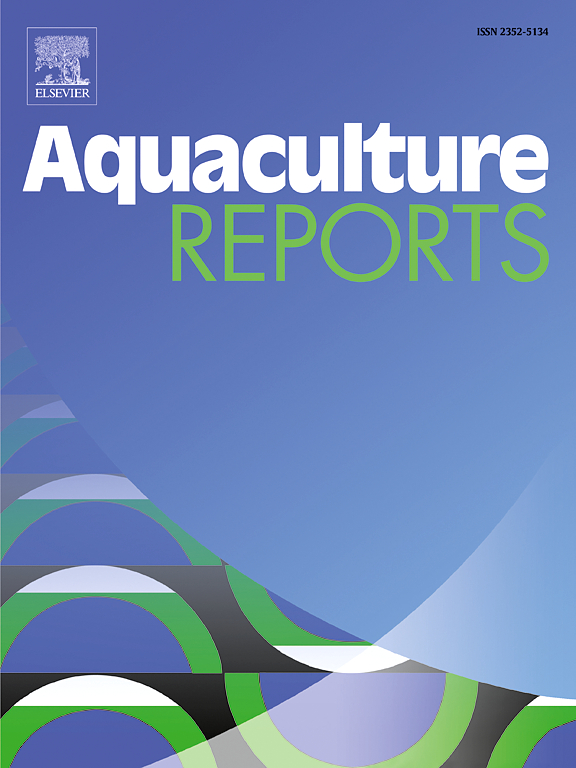Non-invasive sexing of the long-spined sea urchin, Diadema setosum
IF 3.2
2区 农林科学
Q1 FISHERIES
引用次数: 0
Abstract
Sea urchins are highly valued due to their commercial significance and essential roles in marine ecosystems. However, traditional methods for sexing sea urchins, such as spawning induction or gonad histology, are typically invasive, season-dependent, time-consuming, and labour-intensive. This study investigated non-invasive sexing techniques for Diadema setosum by assessing various morphological traits, performing a genome wide association study (GWAS), and testing PCR markers previously developed for Mesocentrotus nudus. Of the 16 morphological traits examined, only genital papillae exhibited sexual dimorphism, achieving 82.5 % accuracy for sex identification in a blinded experiment. Importantly, the sexual divergence of this trait was independent of the urchins’ reproductive status, making it a reliable year-round sexing indicator. The PCR markers from M. nudus did not prove applicable for D. setosum. However, a genomic region with 22 male-heterozygous SNPs on Scaffold 2 was identified, spanning just 1154 bp. This region holds potential for development into a PCR- or sequencing-based sexing barcode for D. setosum. These findings present a promising avenue for non-invasive, season-independent sex identification in this species, with potential to enhance the efficiency and sustainability of sea urchin aquaculture.
长刺海胆的非侵入性性别鉴定,Diadema setosum
海胆具有重要的商业价值,在海洋生态系统中发挥着重要作用,因而备受重视。然而,传统的海胆性别鉴定方法,如产卵诱导或性腺组织学,通常具有侵入性、季节依赖性、耗时和劳动密集型等特点。本研究通过评估 Diadema setosum 的各种形态特征、进行基因组关联研究(GWAS)以及测试之前为裸海胆(Mesocentrotus nudus)开发的 PCR 标记,研究了非侵入性的性别鉴定技术。在考察的 16 个形态特征中,只有生殖器乳头表现出性双态性,在盲法实验中性别鉴定准确率达到 82.5%。重要的是,这一特征的性别差异与海胆的繁殖状况无关,因此是可靠的全年性别鉴定指标。事实证明,M. nudus 的 PCR 标记不适用于 D. setosum。不过,在支架 2 上发现了一个具有 22 个雄性杂合 SNP 的基因组区域,跨度仅为 1154 bp。该区域有可能发展成为基于 PCR 或测序的 D. setosum 性别条形码。这些发现为该物种的非侵入性、不受季节影响的性别鉴定提供了一条很有前景的途径,有望提高海胆养殖的效率和可持续性。
本文章由计算机程序翻译,如有差异,请以英文原文为准。
求助全文
约1分钟内获得全文
求助全文
来源期刊

Aquaculture Reports
Agricultural and Biological Sciences-Animal Science and Zoology
CiteScore
5.90
自引率
8.10%
发文量
469
审稿时长
77 days
期刊介绍:
Aquaculture Reports will publish original research papers and reviews documenting outstanding science with a regional context and focus, answering the need for high quality information on novel species, systems and regions in emerging areas of aquaculture research and development, such as integrated multi-trophic aquaculture, urban aquaculture, ornamental, unfed aquaculture, offshore aquaculture and others. Papers having industry research as priority and encompassing product development research or current industry practice are encouraged.
 求助内容:
求助内容: 应助结果提醒方式:
应助结果提醒方式:


